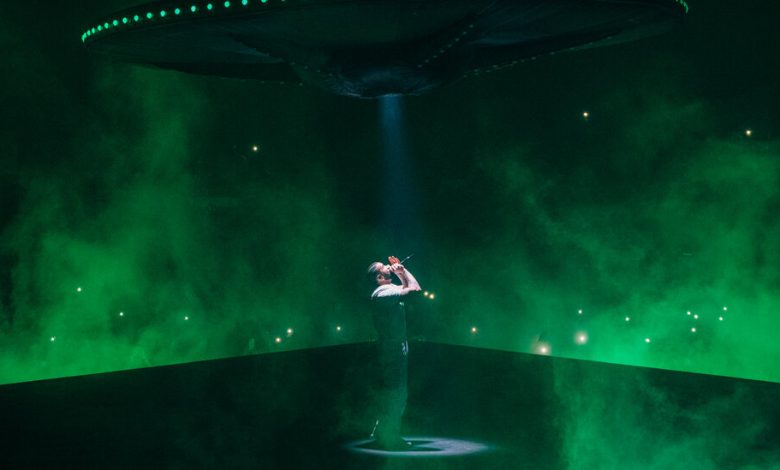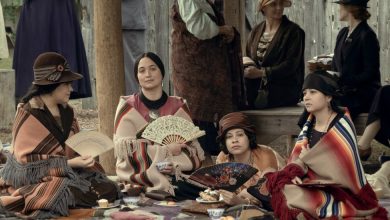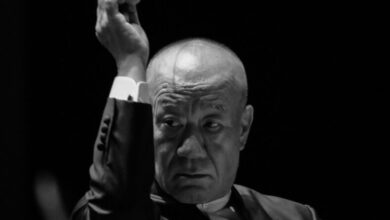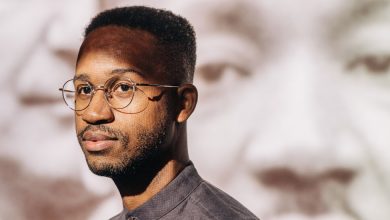It’s Drake’s Season of Discontent, Again

The dominant preoccupation of the hip-hop internet in recent days has been the matter of what Drake — who remains, at 36, the most popular English-speaking rapper on the planet — should rap about.
It is a curious preoccupation but not a new one: Since the beginning of his career a decade and a half ago, Drake has been confounding conventional expectations for rap success. What’s different now is that he is positioned resolutely at the center of the genre, not outside it, and the collective distress about his modes feels like a referendum on an elected leader no one can quite figure out how to unseat.
On “For All the Dogs,” his eighth solo studio album, Drake shows that, in some ways, he, too, is wondering what remains of life at the top. So much so, in fact, that he revisits some of his oldest and most familiar tactics. “For All the Dogs” is an album full of caustic songs about heartbreak, which have added tension now that Drake is a world-beating pop star — there is incredulity cutting through the sadness. These 23 songs are less generally wounded than the early ones that marked him as a signature figure in hip-hop, as fluent in vulnerability as bombast, but they’re scarred nonetheless.
The peak of that approach, “Tried Our Best,” is a surprisingly gentle and soothing catalog of frustration: “I swear that there’s a list of places that I been with you, I want to go without you/Just so I can know what it’s like to be there without having to argue.” Time and again on this album, Drake describes offering trust, only to have it violated (“Bahamas Promises,” “7969 Santa”) — it is, in that way, a return to classic form.
Every so often, he delivers a line so packed with unexpected syllables — “Chinchilla ushanka, we skiin’ out in Courchevel” — that he reinforces the fact that he’s a devilishly nimble rapper when he chooses to be. He doesn’t choose that often on this album, though. “For All the Dogs” includes some of his least ambitious rapping, and whereas on prior albums, he sometimes balances out his complexity with melody, that’s rarely the case here.
In places he’s being deliberate about these choices — where most rappers aim for the gasp, Drake sometimes pointedly goes for the groan: “Feel like I’m bi ’cause you’re one of the guys, girl” (“Members Only”);“Whipped and chained you like American slaves” (“Slime You Out”).
And as is Drake’s wont, there are also a handful of deeply modern, innovative and unexpected production choices — few rappers are as sonically flexible. “Rich Baby Daddy,” which features Sexyy Red and SZA, recalls the Atlanta bass music of INOJ and Ghost Town DJs. “Another Late Night,” a collaboration with Lil Yachty, is full of off-kilter bleeps that feel wobbly, while on “8 a.m. in Charlotte,” he raps over the smoky, soul-drenched minimalism of Conductor Williams, known for his work with the boom-bap revivalist Griselda collective.
This is also standard Drake technique — taking in the whole of hip-hop, from oddballs to traditionalists, and hearing himself in it. Last year he released two albums: the dance-music quasi-experiment “Honestly, Nevermind,” and the 21 Savage collaboration album, “Her Loss.” Implicit in those vastly differing releases was a proposition — perhaps no Drake album had to be an omnibus anymore; instead, he could pursue genre or style experiments to their creative conclusions, pick up a few months later and do so again.
“For All the Dogs” is less focused than either of those albums. It is not an essential Drake album, but it is also possible that the essential Drake cultural contributions are no longer albums, or at least albums of this length and variance.
Or perhaps, the signature Drake innovations may no longer be musical at all — they may be delineating what a musician, a rapper, a pop star does with his scale of success.
Much of what Drake has been engaged in this summer suggests the malaise of boredom, musical or otherwise. He released a book of poetry, or perhaps “poetry” — “Titles Ruin Everything,” written with Kenza Samir — really just an inventory of Instagram captions, some funny. Much funnier, if far stranger, was the interview he conducted with Bobbi Althoff, a kind of method actress/comedian who deploys her ignorance of her subjects (feigned or otherwise) as a weapon. Drake treated the interview like a chess match, seemingly gleeful at the opportunity for a new kind of banter.
There is some of that exuberance in his recent takedown of the social media personality Joe Budden, too. Budden is a onetime rapper who has remade himself as a wildly popular, often acidic commentator. After some unkind comments about the new album, Drake wrote a strikingly long and strikingly mean response online, largely noting how unsuccessful Budden had been as a rapper. But the lengths to which Drake went in order to, in essence, punch down were notable, perhaps the mark of someone who has run out of worthwhile nemeses.
There are enemies on this album, too — he seemingly taunts YoungBoy Never Broke Again, the rare time he takes aim at a younger star. But he also pointedly puts women in his cross hairs: “Fear of Heights,” a song that appears to reference Rihanna, a rumored ex; and offhand and silly shots at the jazz star Esperanza Spalding, who bested Drake for the best new artist Grammy Award in 2011. (Yes, 2011.)
For Drake, as ever, the top is a fraught place. But there is plenty of joy there, too. That much was clear during Drake’s It’s All a Blur Tour this summer, his first since the pandemic. At its Brooklyn stop, in July, he entered the arena walking through the crowd like a boxer preparing for a championship fight, creating a corridor of adulation.
Onstage, he was as energized as he’s been at any point in his career, whether performing early-career lo-fi classics or pop-peak thumpers. He wasn’t a salesman hawking his wares, but an orchestra conductor — the show had the feeling of a fait accompli.
In between songs, he recalled some New York-specific stories from early in his career — an eventful night at the Spotted Pig, a since closed gastro pub, and the 2010 show at the South Street Seaport that turned into a riot before he ever took the stage. Even back then, 13 years ago, the loyalists were shouting down the doubters.





